RAFAH, Gaza Strip — It was once home to an estimated 1.4 million people, over half of the population of Gaza, many of them displaced from the north of the enclave after Israel launched its military offensive following Hamas' Oct. 7 terror attacks.
Today, Rafah is uninhabitable, its buildings crumbled and blackened. Mounds of concrete and bent metal are all that remain. The destruction is absolute.
When NBC News was invited into Gaza's southernmost city by the Israel Defense Forces on Friday, there were no civilians to be seen, just a few cats. Sporadic gunfire and the odd drone overhead punctuated the eery silence.
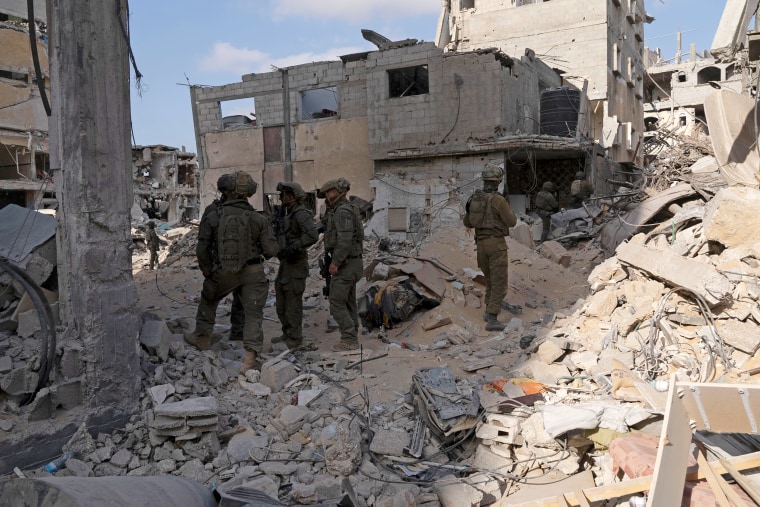 Israeli soldiers inspect Rafah's destroyed buildings.Dave Copeland / NBC News
Israeli soldiers inspect Rafah's destroyed buildings.Dave Copeland / NBC NewsFor more on this story watch "NBC Nightly News with Lester Holt" tonight at 6:30 p.m. ET/5:30 p.m. CT.
The Israeli military says the reason for so much destruction is that all of Rafah is honeycombed with Hamas tunnels, some of which sit on top of each other and some are more than 160 feet deep. The drills they use to find open spaces beneath the earth's surface lie several feet apart.
Calling the destruction a “tragedy,” IDF spokesperson Rear Adm. Daniel Hagari said Hamas created a “very, very sophisticated” tunnel system underneath the city and the military has tried to demolish it “with minimum damage to the city.”
He added that some of the buildings had been booby-trapped with explosives and some of the destruction had been caused in battles with Hamas.
In the Tal Al Sultan neighborhood lies the tunnel where the bodies of six hostages including American Hersh Goldberg-Polin, 23, were found late last month.
The IDF made some videos of the structure public on Tuesday. They said it showed how the tunnel was dug below a child’s bedroom that had paintings of Mickey Mouse and Snow White on the walls.
 An Israeli soldier stands near the entrance to a tunnel in Rafah.Dave Copeland / NBC News
An Israeli soldier stands near the entrance to a tunnel in Rafah.Dave Copeland / NBC NewsCiting postmortem examinations of the bodies, the IDF added that Goldberg-Polin, Carmel Gat, Eden Yerushalmi, Alexander Lobanov, Almog Sarusi and Master Sgt. Ori Danino were killed on the evening of Aug. 29. It’s believed separate guns were used to kill them, the IDF said.
Hagari said Friday the investigation into their deaths was ongoing. Before they died he said the conditions had been “very, very hard in a tunnel where there is humidity, in a very narrow tunnel where you cannot stand, where you have no toilets.”
To the south of Rafah, another tunnel lay near the border area with Egypt, known as the Philadelphi corridor, a narrow strip of land just under 9 miles in length and around 100 yards wide that runs along the Gaza side of the coastal enclave’s border with Egypt.
Wide enough for a car, it had been used for smuggling and to fire rockets into Israel, the IDF said. Hamas placed it there, believing that Israel would not strike back for fear of hitting Egyptian territory.
The Philadelphi corridor has emerged as a sticking point in the cease-fire deal that would end the monthslong war in Gaza and secure the release of the remaining Israeli hostages still held in the enclave.
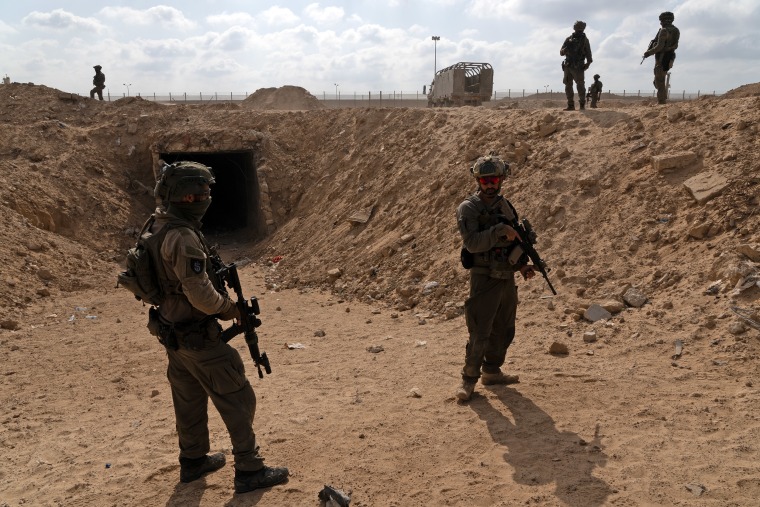 Israeli soldiers near the entrance to a tunnel near the Philadelphi corridor.Dave Copeland / NBC News
Israeli soldiers near the entrance to a tunnel near the Philadelphi corridor.Dave Copeland / NBC NewsIsraeli Prime Minister Benjamin Netanyahu has insisted that Israel must maintain a military presence in the corridor, also known as the Salah al-Din axis, which Hamas has rejected.
Set up as a buffer zone in accordance with the 1978 Camp David Accords between Egypt and Israel, it aimed to control movement in and out of Gaza and prevent arms smuggling between the Egyptian Sinai and the Palestinian enclave.
Israel controlled the area until it withdrew from Gaza in 2005, prior to which Israel and Egypt signed the Philadelphi Accord, which allowed Egypt to send hundreds of border guards to patrol the corridor’s borders.
It still includes the key Rafah border crossing, long considered a lifeline for Palestinians in Gaza as it allows crucial supplies of food, medicine and other aid to get into the strip and enables people to move in and out of the enclave.
But Egypt shuttered the crossing to most shortly after the start of the war last year, and since Israel seized control of the Gaza side in May, it has remained closed.
The Israeli military said in a statement Thursday that it had “dismantled” Hamas’ brigade in Gaza’s southernmost city of Rafah and killed more than 2,000 of its fighters in the process. It added that it had destroyed around 8 miles of “underground tunnel routes” used by the militant group and was continuing to demolish more of them.
But asked Friday whether Israel would leave the city, which had a prewar population of around 250,000, Hagari said Israel “had several plans for the war,” but the decision would be made by the Israeli government.
The IDF has previously re-entered parts of Gaza after Hamas regrouped in areas it said it had cleared.
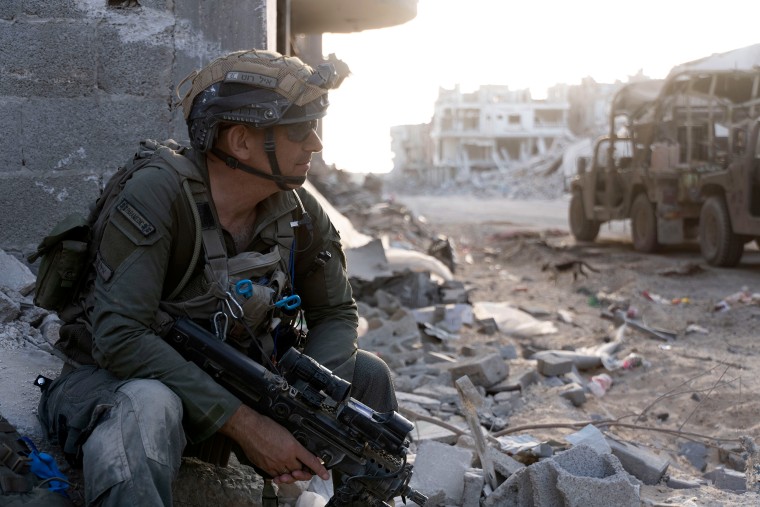 An Israeli soldier in Rafah.Dave Copeland / NBC News
An Israeli soldier in Rafah.Dave Copeland / NBC NewsAfter Israel sealed off much of northern Gaza shortly after the start of the war, bloody fighting erupted in the refugee camps of Jabaliya, Shejaiya and Gaza City earlier this year, underlining the difficulties Netanyahu faces in meeting his promise to “crush” the militant group.
Israel has vowed to eradicate Hamas after militants killed 1,200 people and took more than 250 hostages in a cross-border assault on Oct. 7, 2023, according to Israeli tallies. The death toll in Gaza in Israel’s retaliatory offensive since then has reached more than 41,000, according to health officials in the enclave.
“The first mission, and main mission, besides the defeat of Hamas, is to bring back the hostages in all means, back home,” Hagari said.
.png)
 5 days ago
16
5 days ago
16

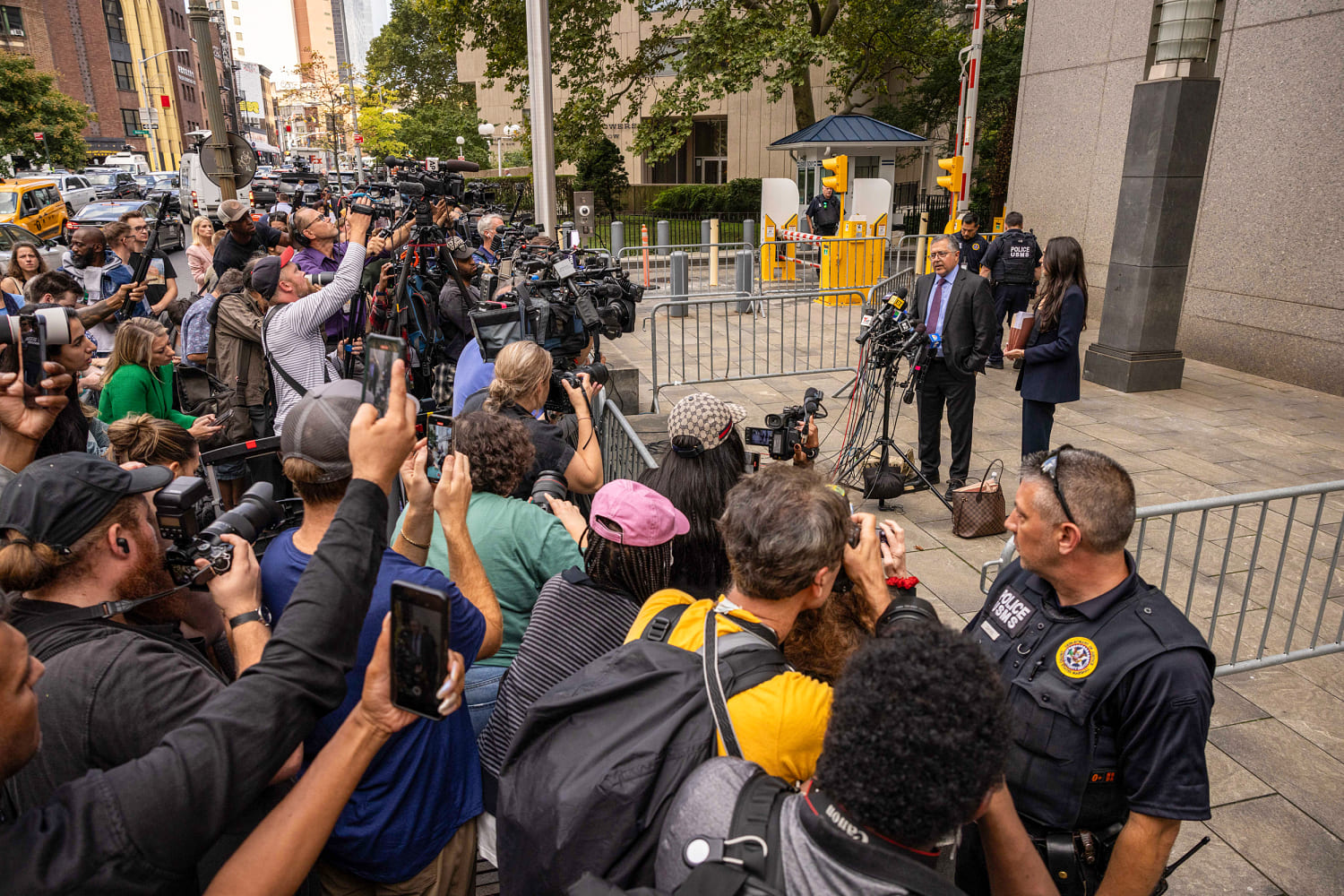

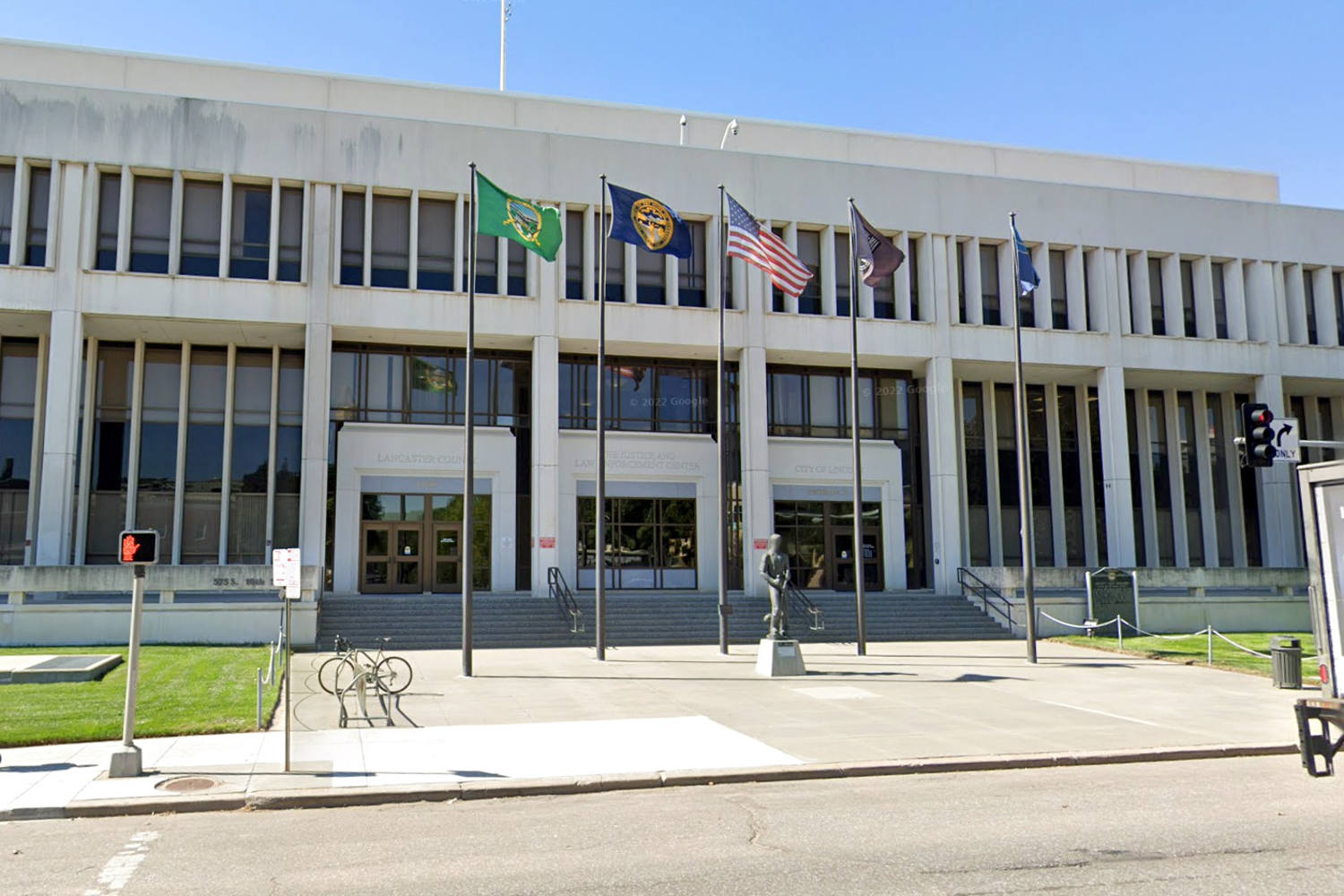

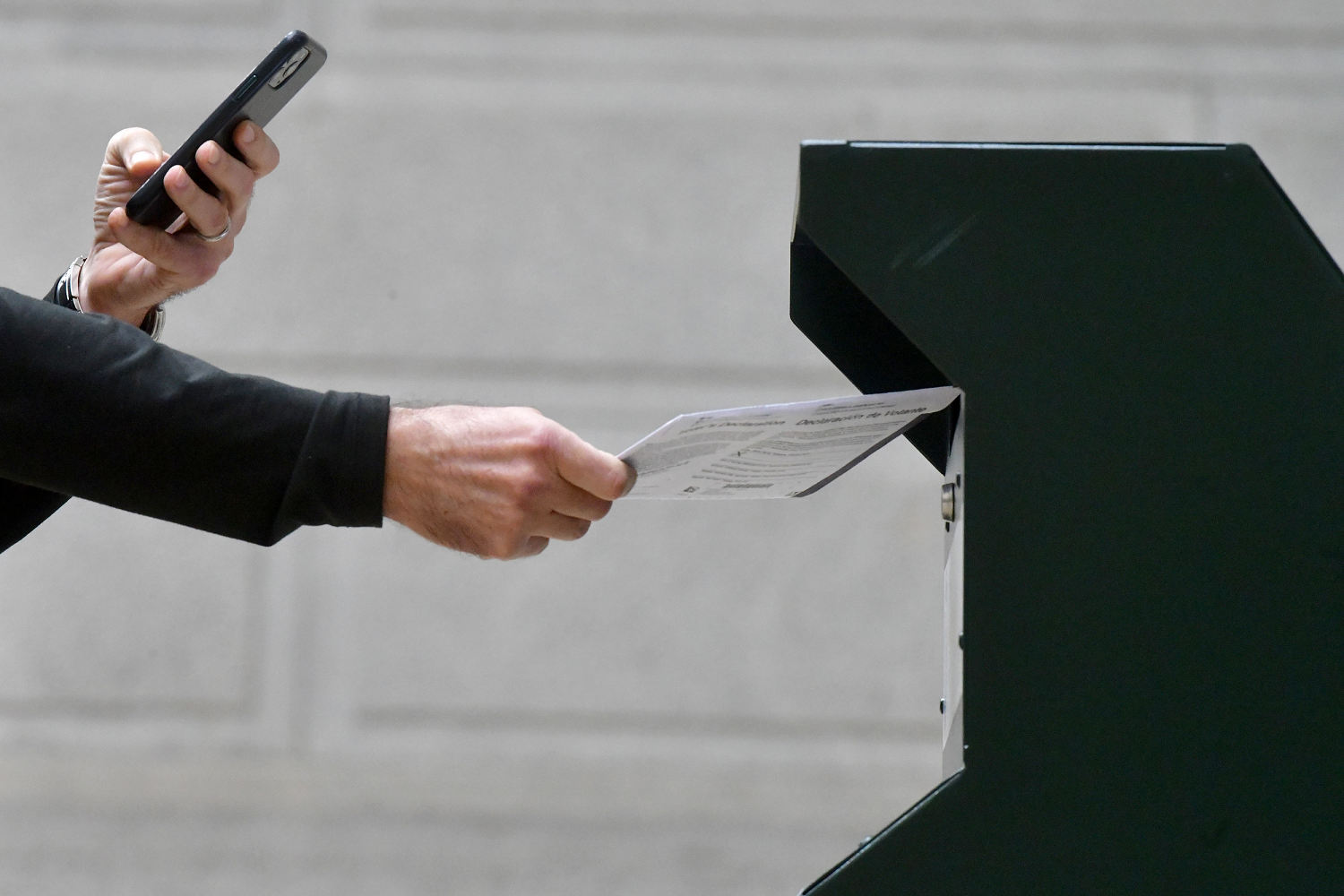























 Bengali (BD) ·
Bengali (BD) ·  English (US) ·
English (US) ·